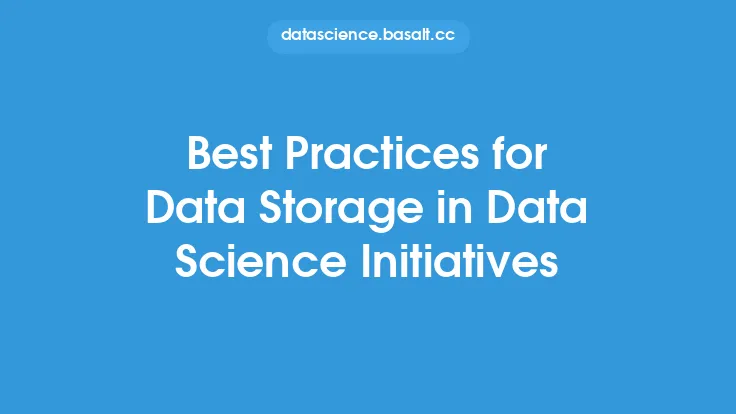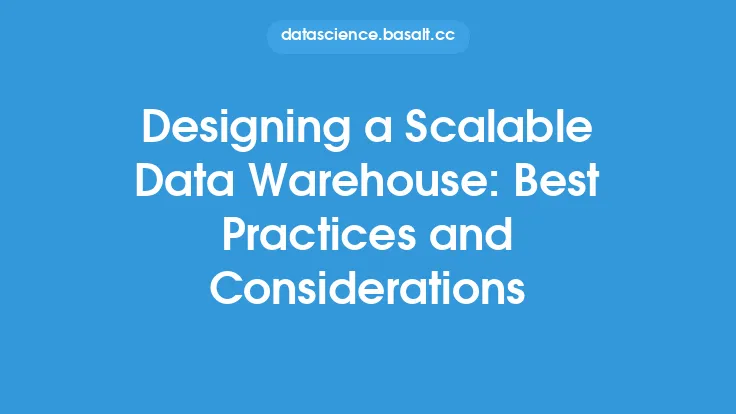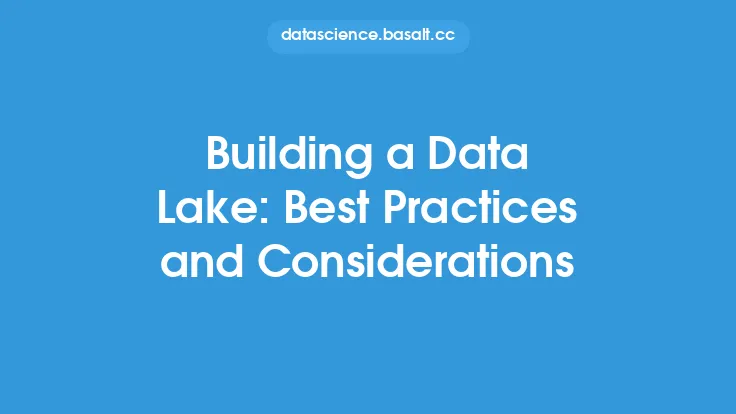As data science continues to play an increasingly important role in driving business decisions, the need for scalable, flexible, and cost-effective infrastructure to support data-intensive workloads has become more pressing. Cloud computing has emerged as a popular solution for data science teams, offering a range of benefits including on-demand scalability, reduced capital expenditures, and increased collaboration. However, working with data science in the cloud also presents several challenges and considerations that must be carefully evaluated to ensure successful outcomes.
Introduction to Cloud-Based Data Science
Cloud-based data science refers to the practice of using cloud computing resources to support data science workloads, including data ingestion, processing, storage, and analysis. This can include a range of activities, such as data wrangling, machine learning, and data visualization, as well as the use of specialized tools and technologies like Jupyter Notebooks, Apache Spark, and TensorFlow. By leveraging cloud-based infrastructure, data science teams can quickly spin up and down resources as needed, reducing the need for costly hardware investments and minimizing the administrative burden associated with managing on-premises infrastructure.
Benefits of Cloud-Based Data Science
There are several benefits to using cloud-based infrastructure for data science workloads. One of the primary advantages is scalability, which enables data science teams to quickly respond to changing business needs and scale up or down as required. This can be particularly important for organizations that experience fluctuating demand or need to support large-scale data processing workloads. Additionally, cloud-based infrastructure can provide significant cost savings, as organizations only pay for the resources they use, rather than having to invest in expensive hardware and software licenses. Cloud-based data science also enables increased collaboration and flexibility, as data science teams can work together in real-time, regardless of location, and access a range of tools and technologies from anywhere.
Cloud Service Models for Data Science
There are several cloud service models that can be used to support data science workloads, each with its own strengths and weaknesses. Infrastructure as a Service (IaaS) provides virtualized computing resources, such as servers, storage, and networking, which can be used to support a range of data science workloads. Platform as a Service (PaaS) provides a complete development and deployment environment for data science applications, including tools, libraries, and frameworks. Software as a Service (SaaS) provides pre-built data science applications and tools, which can be used to support specific use cases, such as data visualization or machine learning. Choosing the right cloud service model will depend on the specific needs and requirements of the data science team, as well as the level of control and customization required.
Security and Compliance Considerations
One of the primary concerns when working with data science in the cloud is security and compliance. Data science workloads often involve sensitive and confidential data, which must be protected from unauthorized access and misuse. Cloud providers offer a range of security features and tools, including encryption, access controls, and monitoring, which can be used to protect data and ensure compliance with regulatory requirements. However, data science teams must also take steps to ensure that their own practices and procedures are secure and compliant, including using secure protocols for data transfer, implementing robust access controls, and regularly auditing and monitoring their environments.
Data Management and Storage Considerations
Data management and storage are critical considerations when working with data science in the cloud. Data science workloads often involve large volumes of data, which must be stored, processed, and analyzed in a scalable and efficient manner. Cloud providers offer a range of storage options, including object storage, block storage, and file storage, each with its own strengths and weaknesses. Data science teams must carefully evaluate their storage needs and choose the right storage option to support their workloads. Additionally, data science teams must also consider data governance and quality, including data validation, data cleansing, and data transformation, to ensure that their data is accurate, complete, and reliable.
Networking and Connectivity Considerations
Networking and connectivity are also important considerations when working with data science in the cloud. Data science workloads often require high-speed, low-latency networking to support data transfer and processing, which can be challenging in cloud environments. Cloud providers offer a range of networking options, including virtual private clouds (VPCs), subnets, and network security groups, which can be used to support data science workloads. Data science teams must carefully evaluate their networking needs and choose the right networking options to support their workloads. Additionally, data science teams must also consider connectivity options, including VPNs, direct connect, and peering, to ensure that their data science environments are securely and reliably connected to their on-premises infrastructure.
Best Practices for Cloud-Based Data Science
There are several best practices that data science teams can follow to ensure successful outcomes when working with cloud-based data science. One of the primary best practices is to carefully evaluate cloud providers and choose the right provider to support their workloads. Data science teams should also develop a comprehensive cloud strategy, including a clear understanding of their cloud service model, security and compliance requirements, data management and storage needs, and networking and connectivity requirements. Additionally, data science teams should prioritize automation, using tools and technologies like Terraform, Ansible, and Docker to automate their cloud deployments and reduce the administrative burden associated with managing cloud infrastructure. Finally, data science teams should prioritize monitoring and logging, using tools and technologies like Prometheus, Grafana, and ELK to monitor their cloud environments and troubleshoot issues quickly and efficiently.
Conclusion
In conclusion, cloud-based data science offers a range of benefits, including scalability, cost savings, and increased collaboration and flexibility. However, working with data science in the cloud also presents several challenges and considerations, including security and compliance, data management and storage, networking and connectivity, and cloud service models. By carefully evaluating their needs and requirements, developing a comprehensive cloud strategy, and following best practices, data science teams can ensure successful outcomes and drive business value from their data science workloads. As the field of data science continues to evolve, it is likely that cloud-based data science will play an increasingly important role, enabling data science teams to quickly and efficiently support their organizations' data-driven initiatives.





